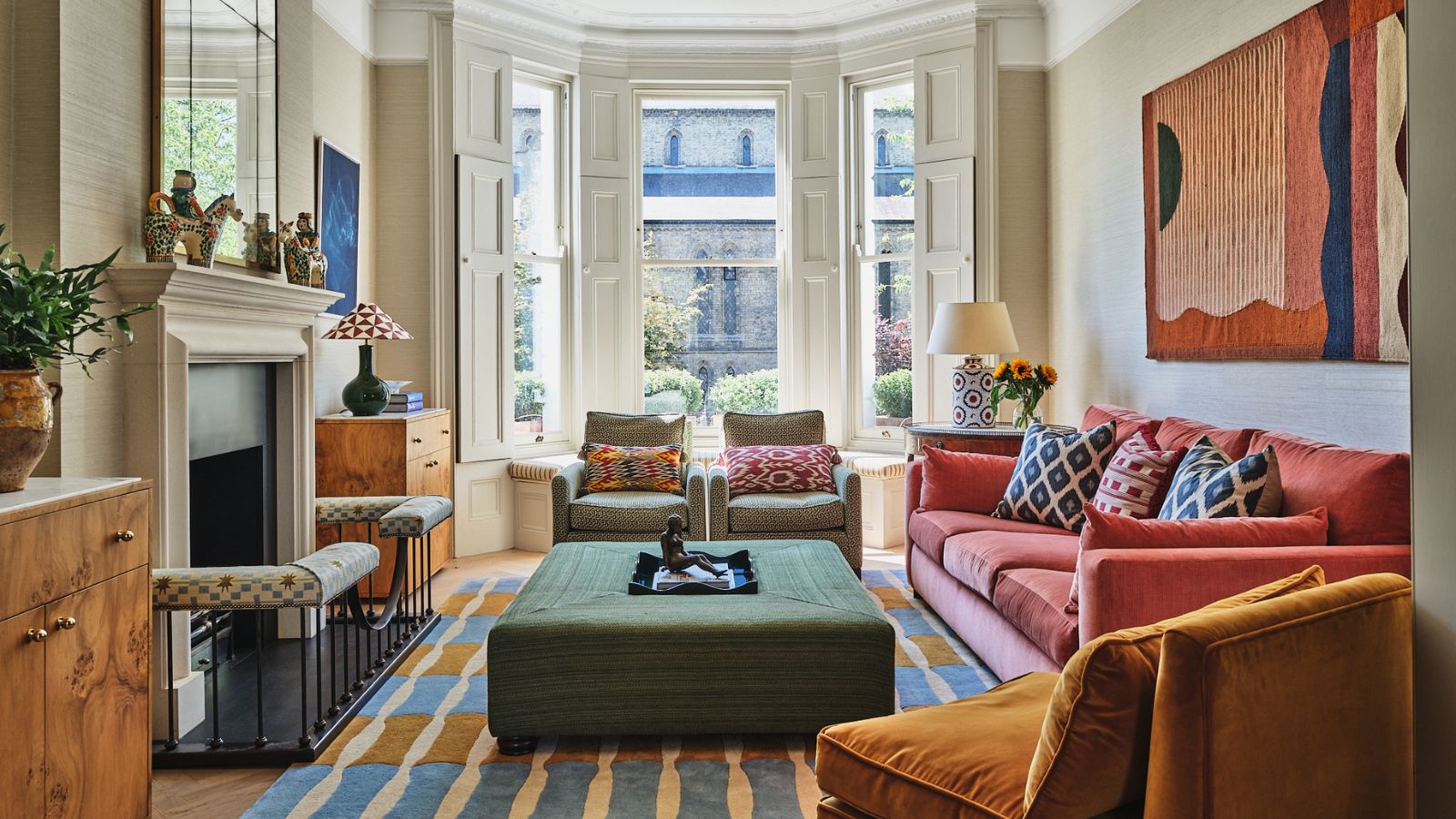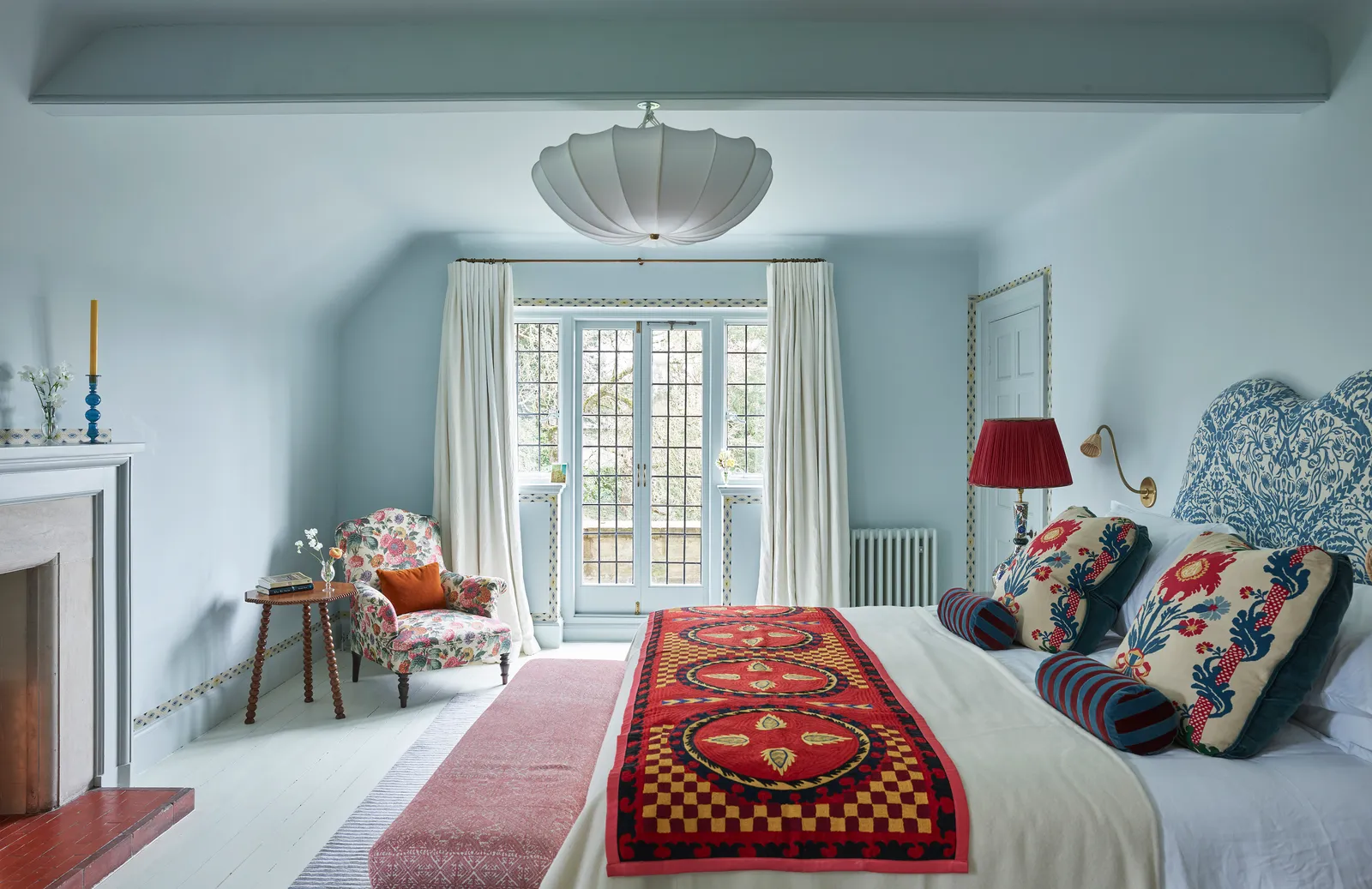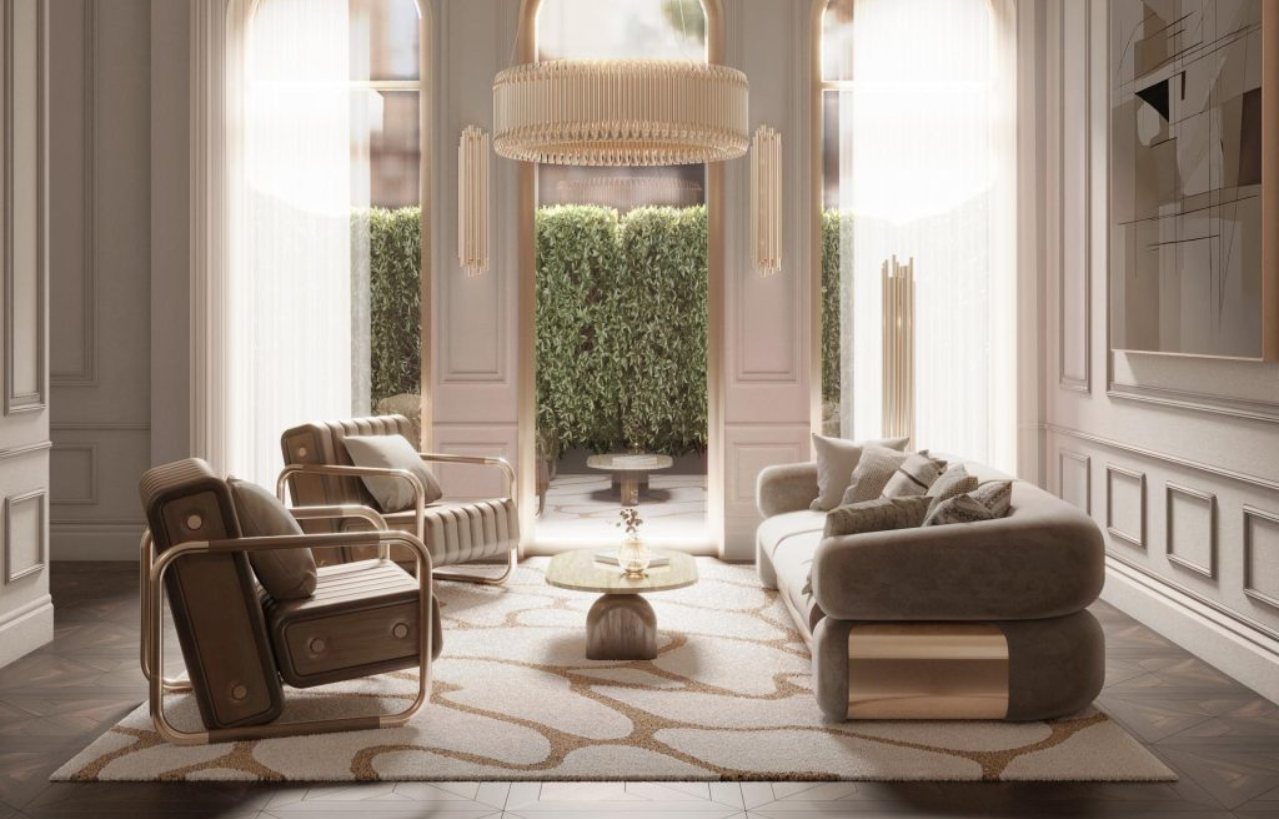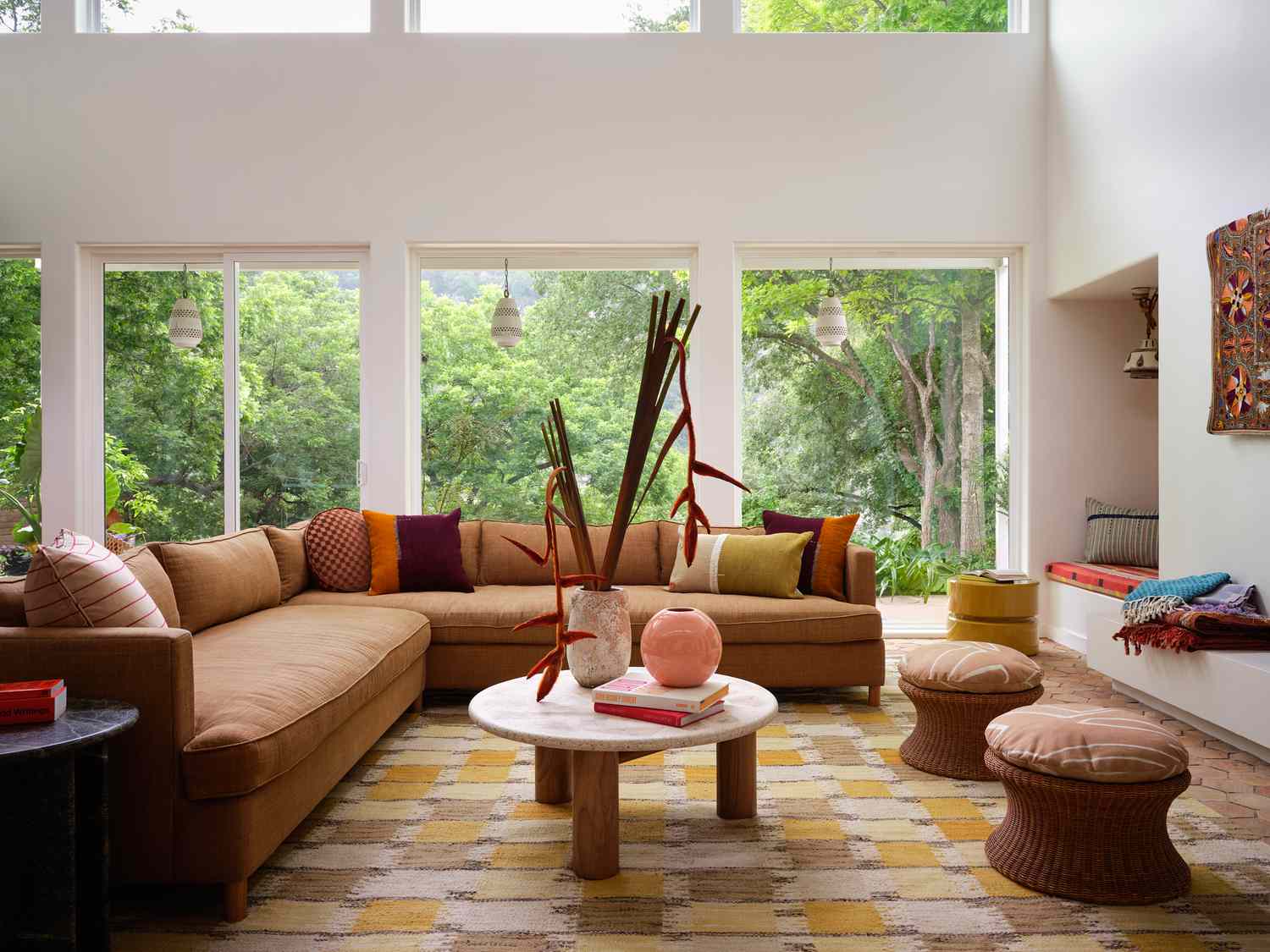Simple Home Styling Tips That Actually Work
Transform your living space this weekend with practical, budget-friendly decorating ideas that deliver real results
Let's be honest—scrolling through those perfectly styled home accounts on Instagram can feel a bit overwhelming, can't it? You see these gorgeous spaces with what looks like unlimited budgets and professional stylists on speed dial, and you think, "Yeah, that's never happening in my flat." But here's the thing I've learned after years of trial and error (and more than a few decorating disasters): creating a beautiful home doesn't require a massive budget or professional help. It just needs a bit of know-how and willingness to experiment.
I've spent the better part of my twenties figuring out how to make rental properties feel like home, working with tight budgets and even tighter landlord restrictions. What I discovered is that the most impactful changes are often the simplest ones. We're not talking about knocking down walls or installing expensive fixtures. We're talking about strategic cushion placement, clever lighting tricks, and understanding basic design principles that actually make a difference.
The beauty of these tips is that they're genuinely achievable. You can tackle most of them over a single weekend, and many cost less than a nice dinner out. Whether you're living in a Budapest apartment or a house in Debrecen, these principles work across different spaces and styles. I've tested them all myself, learned from the mistakes, and refined the techniques that consistently deliver results.
So grab a coffee, get comfortable, and let's dive into the styling strategies that will genuinely transform your space. No unrealistic expectations, no enormous budgets—just practical advice that works in the real world.
The Power of Purposeful Cushion Arrangement
Right, let's start with something that sounds almost too simple to matter—cushions. But stick with me here, because this is genuinely one of the most underestimated styling tools you have at your disposal. The difference between a sofa that looks styled and one that looks like someone just threw cushions at it comes down to a few simple principles.
First up: the rule of odd numbers. This isn't some arbitrary design law—there's actual psychology behind it. Our brains find odd-numbered groupings more interesting and dynamic than even numbers. So instead of placing four identical cushions across your sofa, try three or five. Mix your sizes too—pair a large 50cm cushion with a smaller 40cm one, and maybe add a lumbar cushion (those long rectangular ones) for visual interest.
The layering technique makes a massive difference as well. Start with your largest cushions at the back corners, then layer medium-sized ones in front, and finish with a small accent cushion or two at the front. This creates depth and makes your sofa look intentionally styled rather than just functional. In Hungarian homes, where living rooms often serve multiple purposes, this layered approach helps define the sofa as a focal point rather than just seating.
Color coordination matters, but don't overthink it. Pick a base neutral (grey, beige, cream) and add two accent colors maximum. One of those accents should tie into other elements in your room—maybe your curtains, a piece of artwork, or even a throw blanket. This creates visual flow without making your space look like a showroom. I've found that incorporating traditional Hungarian folk patterns in just one cushion can add character without overwhelming the space.
Wall Art Placement That Makes Sense
There's this persistent myth that hanging artwork is complicated, requiring precise measurements and professional installation. Honestly, it's not rocket science, but there are a few guidelines that'll save you from the classic "hung too high" mistake that plagues so many homes.
The golden rule: center your artwork at eye level, which typically means the center of the piece should be about 145-150cm from the floor. This works for most people and creates a natural viewing height. When you're hanging art above furniture—like over a sofa or console table—leave about 15-20cm of space between the furniture top and the bottom of your frame. This visually connects the pieces without making them feel cramped.
Gallery walls intimidate people, but they're actually quite forgiving once you understand the basic approach. Here's my method: lay everything out on the floor first and take a photo. This lets you experiment with different arrangements without putting fifty holes in your wall. Aim for about 5-8cm of space between frames, and try to keep the overall shape roughly rectangular or square rather than scattered randomly.
For Hungarian apartments with those beautiful high ceilings, don't be afraid to use vertical space. A tall, narrow piece or a vertical gallery wall can emphasize the height and make your room feel more spacious. And if you're renting and can't put holes in walls, command strips have come a long way—they'll hold surprisingly heavy frames if you use enough of them and follow the weight guidelines properly.
Creating Visual Balance Without Symmetry
You don't need perfectly matching pairs of everything to create a balanced room. Asymmetrical balance is actually more interesting and easier to achieve. Think of it like a visual scale—if you have a large piece of furniture on one side of the room, you can balance it with several smaller pieces on the other side. A big bookshelf on the left might be balanced by a floor lamp, side table, and plant grouping on the right.
This approach works brilliantly in smaller spaces typical of European apartments. Instead of trying to cram matching furniture into a room that doesn't have space for it, you can create balance through strategic placement of different-sized elements. The key is to step back regularly and check if one side of the room feels visually "heavier" than the other.
Lighting Layers That Transform Atmosphere
Here's something that took me way too long to figure out: overhead lighting alone makes every room look flat and uninviting. You know that harsh, unflattering light that makes your carefully styled space look like a doctor's waiting room? That's what happens when you rely solely on ceiling fixtures.
The solution is layered lighting, which sounds fancy but really just means having multiple light sources at different heights. You want three layers: ambient (your overhead lights), task (reading lamps, desk lights), and accent (decorative lighting that highlights features). This combination lets you adjust the mood of your room throughout the day.
Start by adding a floor lamp in a corner that typically feels dark. This immediately makes the space feel larger because it pushes light into areas that overhead fixtures miss. Then consider table lamps on side tables or shelves—these create pools of warm light that make spaces feel cozy and lived-in. In Hungarian winters when natural light is limited, this layered approach becomes even more critical for maintaining a welcoming atmosphere.
Don't underestimate the power of dimmer switches either. They're relatively inexpensive to install (or you can buy plug-in dimmer adapters) and they completely change how you can use a space. Bright light for cleaning and working, softer light for relaxing in the evening. The same room, completely different moods.
The Strategic Use of Warm vs. Cool Bulbs
Bulb temperature matters more than most people realize. Those cool, bluish bulbs (5000K+) might seem brighter, but they make spaces feel clinical and cold. For living areas and bedrooms, stick with warm white bulbs (2700-3000K) that create that cozy, inviting glow. Save the cooler bulbs for workspaces where you need to stay alert.
I learned this the hard way after installing "daylight" bulbs throughout my flat and wondering why it felt so unwelcoming in the evenings. Switched to warm bulbs in the living areas and kept the cool ones in my home office—completely transformed how the spaces felt. It's a small change that makes a disproportionately large impact.
Strategic Furniture Placement for Flow
Furniture placement is where many people unknowingly sabotage their spaces. The default approach—pushing everything against the walls—actually makes rooms feel smaller and less functional. I know it seems counterintuitive, but pulling furniture away from walls creates better flow and more usable space.
Create conversation areas by arranging seating in a way that people can actually talk to each other without shouting across the room. Sofas and chairs should be close enough that you could comfortably pass a cup of tea to someone sitting opposite (about 2-2.5 meters apart). This arrangement naturally makes spaces feel more intimate and purposeful.
Traffic flow deserves serious consideration too. You should be able to walk through your main living areas without doing an obstacle course around furniture. Aim for at least 60-90cm of walking space in main pathways. In smaller apartments common in Hungarian cities, this might mean choosing a smaller sofa or skipping the coffee table entirely in favor of nesting side tables you can move around as needed.
Anchor your room with a large piece—usually the sofa—and build around it. The sofa doesn't have to face the TV, by the way. Shocking, I know. Consider what you actually use the room for. If you spend more time chatting with family than watching television, arrange seating to facilitate conversation instead. The TV can go wherever it fits into that arrangement.
Plants as Styling Tools (Not Just Decoration)
Plants aren't just trendy Instagram props—they're legitimate styling tools that solve multiple problems at once. They add color, texture, and life to a space while also improving air quality and filling awkward empty corners. But there's a right way and a wrong way to incorporate them.
Start with easy-care varieties if you're not confident with plants. Pothos, snake plants, and ZZ plants survive in low light and tolerate irregular watering—perfect for busy people or those still learning. In Hungarian apartments with limited natural light during winter months, these hardy varieties keep thriving when fussier plants would struggle.
Height variation makes a huge difference in how plants impact a space. Combine tall floor plants (like a fiddle leaf fig or dracaena) with medium-sized tabletop plants and trailing varieties on shelves. This creates visual interest at multiple levels and makes your space feel more dynamic. A single large plant in a corner can anchor an entire room and fill space more effectively than multiple small pieces of furniture.
Group plants in odd numbers—there's that odd number rule again—and vary the pot styles while keeping a cohesive color scheme. All terracotta, all white, or all black pots create unity even when plant sizes and types differ. This prevents the "random collection" look and makes your plant display feel intentional.
Creative Plant Placement Ideas
Think beyond traditional surfaces. Hanging planters draw the eye upward and work brilliantly in small spaces where floor space is precious. Bathroom plants (ferns love humidity) turn a purely functional space into something more spa-like. Even windowsills can accommodate small herb gardens that are both beautiful and useful—fresh basil for your cooking and greenery for your eyes.
Wall-mounted planters or floating shelves dedicated to plants create living artwork. This works particularly well in rental situations where you can't paint or make permanent changes. The plants themselves become the color and character your space needs.
Color Theory Basics That Anyone Can Apply
Color intimidates people more than almost any other aspect of home styling, but the basic principles are actually pretty straightforward. You don't need to be a designer to understand how to use color effectively—you just need a few simple guidelines.
The 60-30-10 rule gives you a foolproof formula: 60% of your room should be a dominant color (usually walls, large furniture), 30% a secondary color (curtains, accent chairs, rugs), and 10% an accent color (cushions, artwork, accessories). This creates balance without overwhelming the space with too many competing colors.
Stick to a maximum of three colors in any room, and make sure they work together. The easiest approach is choosing colors that sit next to each other on the color wheel (analogous colors) or directly opposite (complementary colors). If that sounds too complicated, just pick different shades and tones of the same color—this monochromatic approach is nearly impossible to mess up and always looks sophisticated.
Neutrals deserve more credit than they get. Grey, beige, cream, and white aren't boring—they're the foundation that lets your accent colors shine. In Hungarian homes with traditional architectural details, neutral walls let those features stand out while giving you flexibility to change accent colors seasonally without repainting.
Don't forget about undertones. That "white" paint you're considering might have pink, yellow, blue, or grey undertones that drastically affect how it looks in your space. Test paint samples on your actual walls and observe them at different times of day before committing. The same applies to furniture—a "grey" sofa might read blue or brown depending on its undertones and your lighting.
The Art of Decluttering Without Going Minimalist
You don't need to adopt a minimalist lifestyle to have a well-styled home, but you do need to be strategic about what you display. The difference between "cozy and collected" and "cluttered and chaotic" often comes down to intentional editing.
Use the "surface rule": keep only 30-50% of horizontal surfaces clear. This means your coffee table, console tables, and shelves should have breathing room. Group smaller items together—three candles look intentional, one candle looks forgotten, five candles scattered everywhere looks messy. The grouping creates visual weight while maintaining clean space around it.
Closed storage is your friend. Baskets, boxes, and cabinets let you keep things accessible without having them on display. This is especially important in smaller apartments where you need to maximize storage. Choose storage solutions that complement your decor—woven baskets for a natural look, sleek boxes for modern spaces, vintage trunks for eclectic styles.
Rotate your accessories seasonally. You don't need to display every decorative item you own simultaneously. Pack away half your accessories and swap them out every few months. This keeps your space feeling fresh without buying new things, and it gives you a chance to rediscover items you'd forgotten about.
The "Does It Earn Its Place?" Test
Every item in your space should either be functional, beautiful, or ideally both. If something doesn't meet that criteria, it's taking up valuable real estate. This doesn't mean being ruthlessly minimal—it means being intentional. That quirky vase you inherited from your grandmother? If it makes you smile, it's earning its place. The random knick-knack you bought on impulse and don't even like? That's clutter.
Apply this test regularly, maybe seasonally, and you'll naturally maintain a space that feels curated rather than cluttered. It's not about having less—it's about having things that matter to you.
Textiles and Textures for Depth
Flat surfaces and uniform textures make spaces feel one-dimensional and uninviting. The solution is layering different textile textures throughout your room—this adds visual interest and physical comfort simultaneously.
Start with your sofa: add a throw blanket in a different texture from your cushions. If your cushions are smooth cotton, try a chunky knit or faux fur throw. This contrast creates tactile interest that makes people actually want to sit down and get comfortable. In colder Hungarian winters, these layers serve double duty—beautiful and warming.
Rugs deserve special attention because they're often the largest textile element in a room. Layer rugs for added interest—a large natural fiber rug (jute or sisal) with a smaller patterned rug on top creates depth and defines spaces within open-plan layouts. This technique works brilliantly in rentals where you can't change the flooring but want to add character.
Don't neglect window treatments. Heavy curtains in winter keep heat in and add softness to hard walls and windows. In summer, swap to lighter linen curtains that filter light beautifully. The seasonal change refreshes your space and responds to practical needs. Choose curtains that hang all the way to the floor and are wider than your window frame—this makes windows appear larger and more impressive.
Mix smooth and rough textures deliberately. Smooth leather or velvet furniture paired with rough jute rugs, soft knit throws with sleek metal side tables, glossy ceramics with matte wood surfaces. These contrasts create visual rhythm that keeps spaces interesting without feeling chaotic.
Small Changes With Maximum Impact
Sometimes the smallest tweaks create the most noticeable improvements. These are the changes you can make in an afternoon that immediately elevate your space.
Hardware updates: Swapping cabinet handles and door knobs is ridiculously easy and transforms dated furniture instantly. Brass hardware adds warmth, matte black creates drama, brushed nickel reads modern. This works for rental properties too—keep the original hardware and swap it back when you move.
Mirror placement: Mirrors opposite windows reflect light and make rooms feel larger. A large mirror in a small room can genuinely double the perceived space. Position them thoughtfully though—you don't want them reflecting clutter or unflattering angles.
Fresh flowers or branches: A simple vase of seasonal flowers or even interesting branches from your garden (with permission) adds life and color. This costs almost nothing but makes spaces feel cared for and current. Markets in Hungarian cities offer affordable seasonal flowers that bring nature indoors.
Books as decor: Stack coffee table books (turn some horizontal, some vertical), arrange books by color on shelves, or use them to add height under decorative objects. Books add intellectual character and solve styling problems simultaneously.
Scent strategy: Candles, diffusers, or even simmering spices on the stove create atmosphere beyond what's visible. Scent connects to memory and emotion more powerfully than visual elements. Choose scents that match your space's mood—fresh citrus for energizing, warm vanilla for cozy, herbaceous scents for grounding.
Bringing It All Together
The beauty of these styling tips is that they're genuinely achievable without professional help or massive budgets. You don't need to implement everything at once—in fact, you shouldn't. Choose one or two areas that'll make the biggest impact in your specific space and start there.
Maybe your lighting needs attention first, or perhaps rearranging your furniture to improve flow would solve multiple problems. Trust your instincts about what's not working in your current setup, and apply the relevant principles from this guide. The goal isn't perfection—it's creating a space that feels comfortable, functional, and genuinely yours.
Remember that styling is an ongoing process, not a one-time project. Your needs change, seasons change, and your taste evolves. The skills you develop implementing these tips will serve you in every space you inhabit. You're not just decorating a room—you're learning to see space differently and understanding how to shape it to support your life.
Start this weekend with one small change. Rearrange your cushions using the odd number rule. Add a floor lamp to that dark corner. Group your plants together for more impact. Whatever you choose, you'll immediately see the difference, and that success will motivate you to tackle the next improvement. Your home should support and inspire you—these tips help make that happen without breaking the bank or requiring professional intervention.




